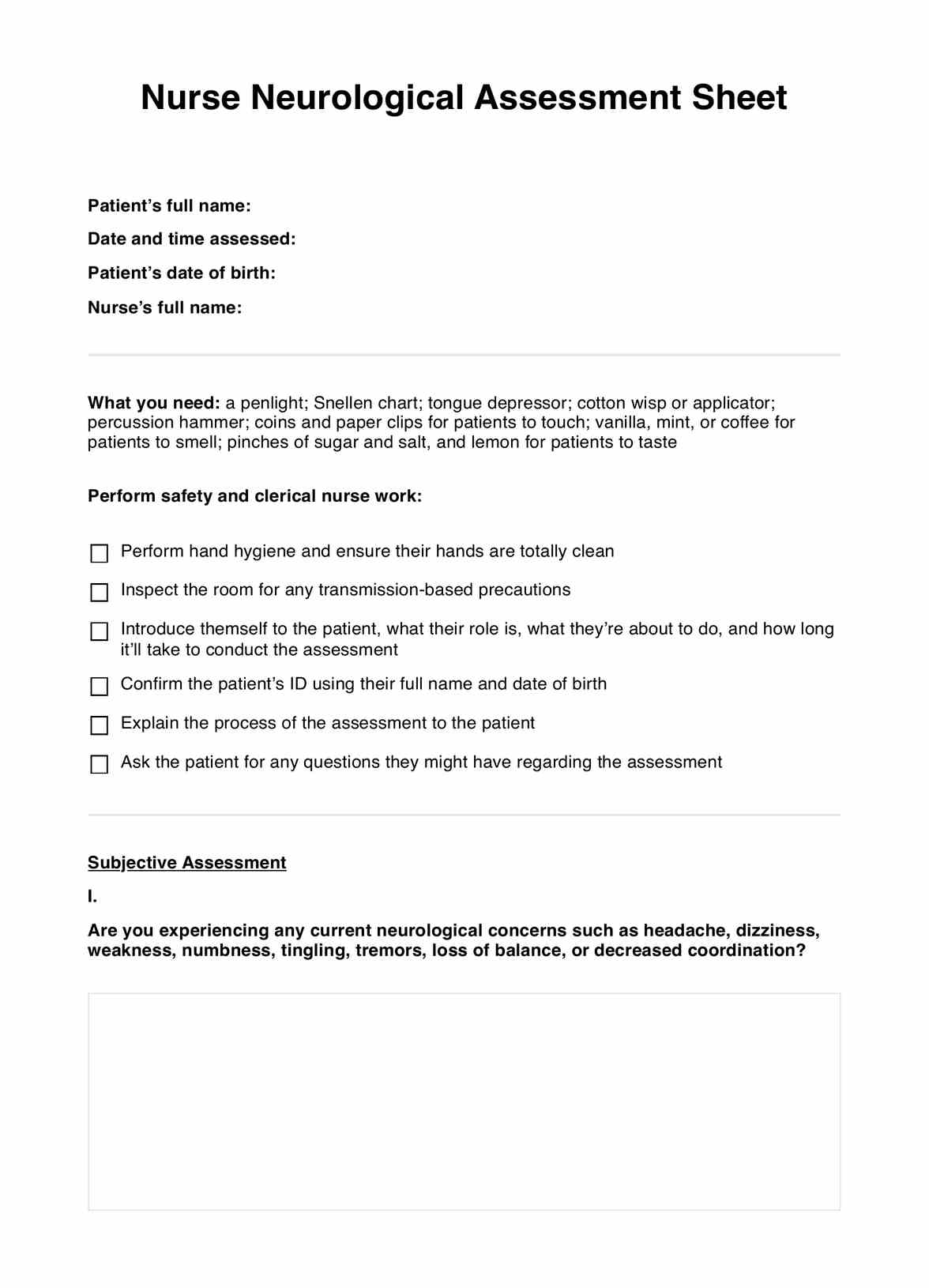Given that this is a comprehensive examination, it will take at least an hour to do all of it, but don’t be surprised if it takes longer.

Nurse Neurological Assessment
Use our Nursing Neurological Assessment when evaluating patients. Get access to a free PDF template and example now.
Use Template
Nurse Neurological Assessment Template
Commonly asked questions
Inform other nurses and doctors so they know about these changes and so they can determine what to do for the patient when their shift officially starts.
Rouse them using the steps of the AVPU Scale or Glasgow Coma Scale. If they are still unresponsive and unconscious, notify other nurses and doctors so you all can determine the next steps. You can’t really conduct several parts of the assessment if the patient is unconscious.
EHR and practice management software
Get started for free
*No credit card required
Free
$0/usd
Unlimited clients
Telehealth
1GB of storage
Client portal text
Automated billing and online payments











